The Madness Behind Coffee
An Insight to The Madness Behind Coffee
Looking at what has occurred and what is yet to come of The Lawn Lincoln Mental Asylum stands the main element of our performance ‘The Madness Behind Coffee’. Taking the audience one-to-one on a journey through time presenting them with factual information about The Lawn through the use of character and voice gives the viewer a real insight into how The Lawn was and what it will become. The use of speech and audio is the key performative component within our performance. The complete script of our piece is to be listened to through a set of headphones, where characters stories and factual information about The Lawn will be received. The performance is set in Stokes Coffee shop due to The Lawn being under reconstruction works in order to turn it into Lincoln’s new Stokes cafe. Throughout the performance the audience receives a real essence of time travel through interaction, not only by voice but by key gestures provoked by the characters whilst listening to the factual audio. The use of music through the audio piece also sets the scene of the performance adding authenticity. Due to the music being relevant to its time it creates the effect of time travel.
Each one-to-one performance is 15 minutes long, capturing the main elements of The Lawns 200 years of history. Focusing on The Lawn specifically we found in order to keep its culture and history within our performance that the only other option would be to set our piece in a location where the audience would feel the future essence of the building, which is Stokes coffee. Fiona Wilkie and her ideas we found influenced our site location. A specific quote from Mapping the Terrain we found specifically useful; ‘Search for alternative venues in which to stage performance is a means of encountering and creating other maps of the cultural space’ (Barker and Trussler, 2002). Enrapturing the same culture in a new space other than The Lawn we found was crucial for our performance to be a success, we found Fiona’s journal useful in guiding us to selecting the right sight in order for it to still be site exclusive.
Our audience within the performance may interact as much or as little as they would like. Due to our piece only having speech through audio the audience may feel reluctant to participate. However, physical actions which the characters display such as playing chess, may provoke the audience to participate. ‘A more active participation in both site and performance provides the opportunity to actually embody site’ (Birch, Tompkins 2012). ‘Since I Suppose’ is a site-specific theatrical experience based on Shakespeare’s classic Measure for Measure by American Theatre Wing Company. The show allows the audience one-by-one to travel on an impressive journey through down town Chicago.
The production uses audio and video to guide the audience through the city. Our original idea was to create a ghost walk of The Lawn Lincoln using the audio device, we found this specific performance rather influential as it helped guide us to create a piece based around audio and the city of Lincoln itself in which the audience is the centre of the performance. Within the YouTube video of Since I suppose the director quotes ‘I describe what we do as immersive theatre, the audience is in the centre, the show happens upon them, they experience it first-hand’ (American Theatre Wing, 2014). I found American Theatre Wing to help influence and develop our mythogeography process.
See Link Below
Analysis of Process
Introducing Mythogeography and Drifting
There are many benefits to Site Specific performance, many of which are towards the community. Often there are communities which are unable to access the theatre due to financial issues and there is also the concern of feeling out of place. Site specific performance brings the theatre to the community performing in specific areas and locations making theatre more affordable and approachable. We started our process by Looking at Mythogeography; ‘a way of walking, thinking and visiting a place on many levels at the same time’ (Smith, 2010) and from this our group were asked to perform a ‘drift’. Minimal instructions were given from an online source ‘A Starter Kit for Drifters’, as ‘You don’t have to get anywhere, there isn’t a set destination, and it’s all about the journey’ (Smith, 2010).
We decided to start our drift from the LPAC a place we were all familiar with and decided to head towards uphill Lincoln as we were all less familiar geographically with this specific part of the city. Every time we emerged at a junction, we decided spontaneously which way to turn. We were asked to free ourselves from our normal walking habits, this we ensured as we came across buildings and sites which were visually new to us in Lincoln. We came across buildings such as the Water Tower, which we later found was built due to a deadly outbreak of typhoid between 1804 and 1805, a valuable and historic building in the city of Lincoln.
During our drift the building which captured our eyes and imaginations the most was The Lawn. First, we came across an iron statue of a man which was labelled as Edward Parker Charlesworth an English physician, known as an innovator in psychiatric treatment. The Grade II listed building stays true to its history with the exterior and grounds remaining as authentic as possible. We were suddenly surprised when we were to read the sign placed at the front of The Lawn explaining that The Lawn was built for the purpose to treat the mentally ill. The building opened in 1820 as a mental institution, and was the first Mental Institution to not use barbaric treatments. From here we were adamant that this was the site in which we would like to research further and we were very keen to process our ideas and develop them.
Samuel Robinson Fig 1 Samuel Robinson Fig 2 Samuel Robinson Fig 3
Development and progress of ideas
Within our development process, we decided to search for more detailed history about The Lawns Mental Patients. We then came across a site which informed us that the Lincoln Archive centre held ‘Records of the Lawn Hospital, Lincoln, formerly the Lincoln Lunatic Asylum’ (Lincs to the past, 2012). The experience was new to us and we found the process of the research exciting yet daunting as there were strict rules held in place whilst you were inside the Archive centre due to the building holding factual and statistical information about the people of Lincoln and Lincoln itself.
I went on to view the Restraint register book, which I found captivating due to its fragile condition holding the original documents. Within the register held a letter which asked formative questions to relatives/friends of the admitted patient, such as; ‘At what period of life did the patient first exhibit symptoms of insanity?’ and’ Has been under any medical care whilst insane, if so who’s’, This specific letter we used within our performance and handed it to the audience member in order to create a personal connection and to allow the sense of time travel. Within the register of restraints used within the Asylum we found that the hospital used several restraining methods on their patient’s almost every day for decades, such as hand cuffs and the restraint jacket. We were enthusiastic to see how we would be able to incorporate the factual information about the restraining methods into our performance. Former group members Samuel Robinson and Alexander Marshall searched a document revealing the patient’s doctor records. Here is where we found several reports based on single mothers demonstrating the psychotic effects which the withdrawal from their child had on them. We decided to go forward with this information, in which we created a character for our performance based on our findings.
Due to the minimal information found within the doctor’s notes, we decided to take on a more fictional approach. However, in order to create a piece which is true to its events how much can we fabricate the stories? Researching into this we found a chapter named The Place of the Artist by Tim Etchells who quotes ‘ How long do you have to have lived somewhere until you’re allowed to lie about it’ (Etchells,1996, 51). From this we decided to not lie about the stories but to create a sincere character in which the audience will be able to interact with and play chess whilst also hearing the characters thoughts about her withdrawn child and the upset in which it will have caused through the audio piece (headphones). ‘Entertainment for the patients was an important part of their treatment, and provision was made varying from the purchase of Dominoes, a fox and goose board and draughts’ (My City of Lincoln Story, 2015).
We decided to use the action of playing chess within our piece to create an emotive connection between audience and performer. We found the facts about the entertainment and the patient’s story’s rather emotive and from this we started to develop characters such as the doctor, the nurse and the patient. We assumed that the audience would find it more shocking that the hospital didn’t use such harsh restraints, however, would sympathise with specific characters we chose as well as finding the president of the building to be an inspiration.
Taking our findings forward we drifted from the idea of a ghost walk and decided the performance would have more of an effect if we presented the audience with valuable information about The Lawn whilst generating a guided factual tour based performance around The Lawns grounds. Ideas were taken from the works of ‘The Journey Man’ who produces site specific works for families and children to ‘give people a greater awareness of their surroundings’ (Gillet, 2015). Johnny Gillet researches thoroughly into the history of a specific site by visiting ‘libraries, record offices and even local people as well as viewing the site several times itself’ (Gillet, 2015). His detailed research process gave our group ideas into how far we can actually take our research and offered us accommodating research methods which we engaged with.
Addressing a Problem, Reshaping Ideas
In order to receive rights to perform at The Lawn, we decided to email the council to make sure our ideas were suitable. Much to our surprise we discovered the news that the Lawn in fact had been sold to Stokes Coffee and was going to be under construction and refurbishment work, so we were unable to use the grounds. From here despite the obstacle we decided that performing in the former Stokes Coffee Shop on Lincoln’s High Street would be a great substitute. Not only would this performance space be site specific to the history of The Lawn, but it would also open up the audiences minds to how The Lawn will be in the future. We were able to hire the top floor of Stokes Coffee in the heart of Lincoln itself overlooking the High Street a truly remarkable setting.
Our ideas started to expand and we decided to take the audience on a journey through time, captivating them with the history of The Lawn, still using the facts we gathered and the stories creating an audio based piece for the audience members to listen to, whilst indulging in a Stokes hot beverage, and viewing the actions of The Lawn’s characters from across the table. To elaborate our ideas and to make the performance more personal towards Stokes coffee, we decided to add audio and performance material suggesting the closure of The Lawn, explaining how it was re-opened by the council for hospitality and catering use. And how the council then went on to sell The Lawn, ‘The City of Lincoln Council has been trying to sell The Lawn, which is currently vacant, for three years’ (BBC, 2014).
Here in the performance we had an outside interview take place in which the audience may view from the window in the coffee shop. The interview stated facts about previous bidders as well as explaining that the council were desperate to sell The Lawn as it was an embarrassment ‘Frankly, at the moment it is an embarrassment (Lincolnshire Echo 2014). Here the audience consider how The Lawn used to be a remarkable feature of Lincoln as it was the first mental institution to not use barbaric methods, to how eager the council were to sell the building as they feel it had lost its history and purpose.
Within the interview we decided to introduce the next character, a Stokes representative who successfully won the bid and purchased the lawn for 1 Million pounds in order to create a roastery café. ‘Three bidders were selected after the initial selection process, and then presented their proposals; Stokes was chosen by the City Council in a private session of the Executive Committee on Monday night’ (Fish, 2014). Group Member Samuel Robinson entered the café during our performance, playing the part of Stokes Representative Nick Peel, introducing himself to cast members and audience members by shaking their hands and welcoming them to the future Stokes Coffee shop by presenting pictures of Stokes ideas for The Lawn on his iPad. The use of the iPad demonstrates the change in time from the writing of the letter to the use of electrical equipment, illustrating that The Lawn has been a part of Lincoln’s history for two century’s.
The Main feature and The Finishing Touches
The use of audio was the main feature within our performance, creating a 15 minute sound piece consisting of voice and ambient sound. Using the open source programme audacity on a group members MacBook meant that the system was freely available to us at all time. Having our own recording equipment also allowed the recording process to run more smoothly. We tested areas around the university in order to find a specific area where we could record sounds with no distortion. Quiet corridors, were the answer to this and we each recorded our monologues several times improving them accordingly. We used ambient sounds such as the sounds of Stokes Coffee itself and also sound effects such as pen to paper for visual effect when the doctor is writing the letter. Music was also included within the piece in order to fill time and to also set the scene. An example of this would be angelic period music between monologues to re-create the historical yet daunting atmosphere of The Lawn. ‘Sounds are essential to represent the reality you want to create’ (Kaye, Lebrecht, 2009)
To start the performance, when entering the coffee shop we decided to provide the Audience with a Menu in which we created. Almost identical in appearance to that of Stokes Coffee menu, however, we edited it with key information about The Lawn and key dates which the audience can take into account throughout the performance. Images of the Lawn, our overall idea and a cast member list was also provided within the menu.
An image of our menu is available to view below
Evaluating Our Performance
Our final performance consisted of four one to one performances, between 3.30pm and 5.00pm lasting around 15 minutes. Set in Stokes café on the Lincoln High street the audience members seemed to settle well in their surroundings, relaxing whilst reading our created menu and enjoying a hot drink. When the audio equipment was introduced and the performance was underway, I found myself surprised at the audience’s interactions within the performance.
Samuel Robinson Figure 4 Samuel Robinson Figure 5
During my specific monologue as the patient, whilst setting up the chess bored I encountered an audience member asking my name. In response to this I stayed true to character and distanced myself from the audience member with a slight look of disapproval. I personally feel the audience found the production to be personal as we designated the written patient’s letter to the audience member personally by addressing it to them with their personal names.
Timing within the performance was crucial and we illustrated our confidence with the specific timings successfully, entering, exciting and performing key movements at the right time with the audio. This I felt showed professionalism as it allowed the performance to run efficiently.
New ideas sparked as the performance came to an end, we felt we could take the performance further by elongating the experience, allowing the audience to communicate with the characters further. Also I feel expanding on the stories of the Lawn and focusing on the history rather than the future of The Lawn may have been more alluring for the audience. We as a group could possibly expand the performance even further by showing the audience members the actual grounds of The Lawn so they can relate to the feel of the performance even further.
Within the performance I feel Stokes itself may have been advertised a little too much. Drinking from Stokes cups, reading from a Stokes menu within a Stokes café may have been a little too much. If I were to perform the piece again I would maybe detract slightly from the advertising of Stokes itself and focus more on the key feature of our performance which is The Lawn. Engaging with site specific theories I found very beneficial within our development process. The idea of mythogeography and the process of drifting I find advisable, as it allowed us to reach places and sites we hadn’t seen before. The search into key practitioners such as Blast Theory I found didn’t necessarily link with our piece as they were more art and physical theatre related. However after researching into more depth about site specific practitioners we found artists such as The Journey Man to be very relatable due to its story telling about specific places and venues, educating audience members with history and factual information about a specific site.
Word Count 2,983
Bibliography
Birch, A and Tompkins, J. (2012) Performing Site-Specific Theatre: Politics, Place Practice. Basingstoke: Palgrave Macmillan.
American Theatre Wing (2014) Working in the Theatre: Since I Suppose – Site Specific Theatre [online video] Available from https://www.youtube.com/watch?v=WBN1a352cPY [Accessed 13 February 2015].
Barker, C. and Trussler, S. (2012) New Theatre Quarterly 70. Cambridge University Press, 18 (2) 140-160.
BBC, (2014) The Lawn to become Stokes coffee ‘micro roastery’ [online] Lincolnshire: BBC. Available from http://www.bbc.co.uk/news/uk-england-lincolnshire-30267928 [Accessed 15 February 2015].
Fish, E. (2014) RW Stokes win bid to revamp The Lawn in Lincoln. [online] Lincolnshire: The Lincolnite. Available from: http://thelincolnite.co.uk/2014/11/stokes-coffee-win-lincoln-lawn-bid/ [Accessed 15 February 2015].
Kaye, D and Lebrecht, J. (2009) Sound and Music for the Theatre. The Art and Technique of Design. Oxford: Elsevier Ink.
Lincolnshire Echo (2014) ‘Embarrassing’ Lincoln landmark The Lawn to go back on sale. [Online] Lincolnshire: Lincolnshire Echo. [Available from] http://www.lincolnshireecho.co.uk/Embarrassing-Lincoln-landmark-Lawn-sale/story-20767634-detail/story.html [Accessed 15 February 2015].
Lincs to the past (2012) The Lawn Hospital, Lincoln. [online] Lincoln: Lincs to the Past. Available from http://www.lincstothepast.com/The-Lawn-Hospital–Lincoln/826359.record?pt=S [Accessed 5 February 2015].
My City of Lincoln Story (2014) Lincolnshire Archive by Anya Fitzgerald. [Blog entry] 4 February. Lincoln. Available from https://sitespecific2015ksa.blogs.lincoln.ac.uk/ [Accessed 14 April 2015].
Smith, P (2010) Mythogeography: A Guide to Walking Sideways. England: Triarchy Press.
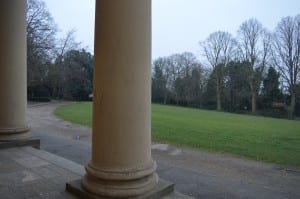
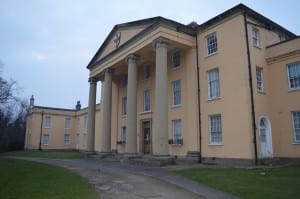

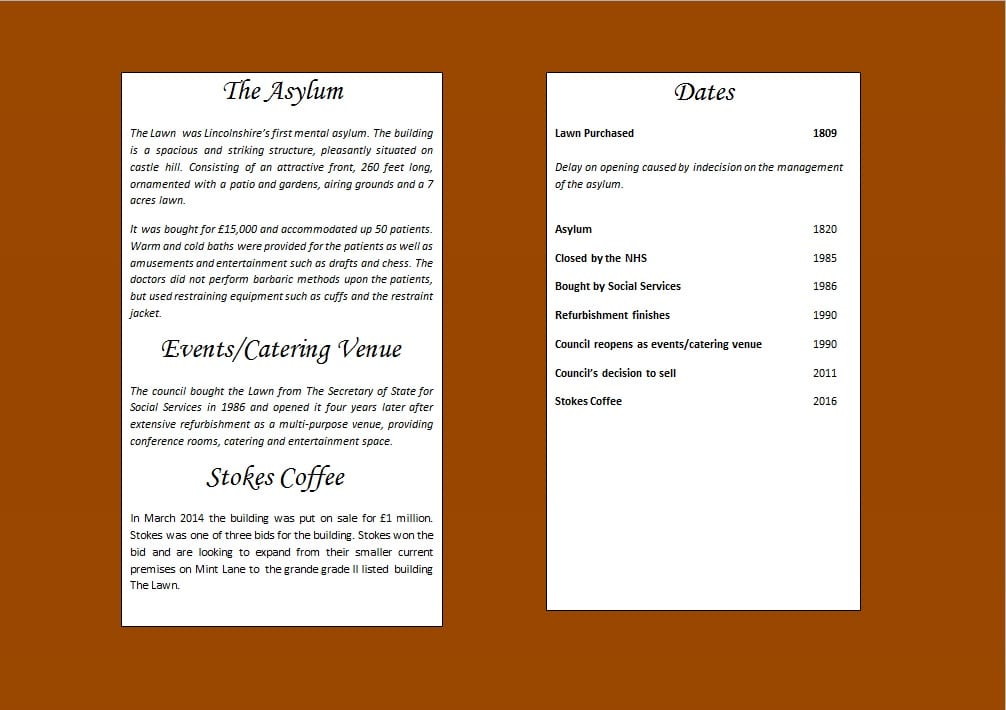

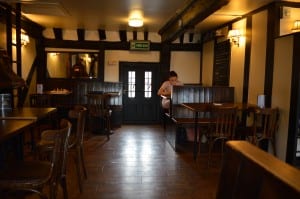
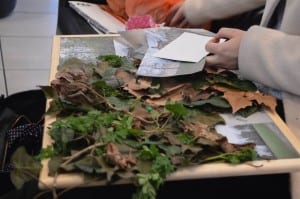
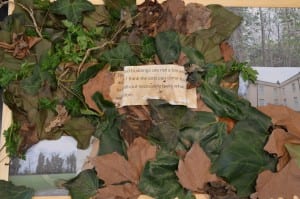
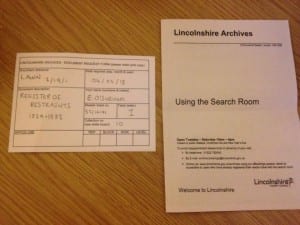
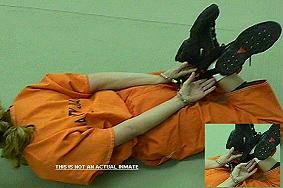



![IMG_7357[1]](https://sitespecific2015ksa.blogs.lincoln.ac.uk/files/2015/01/IMG_73571-e1422718869376-225x300.jpg)
![IMG_7360[1]](https://sitespecific2015ksa.blogs.lincoln.ac.uk/files/2015/01/IMG_73601-e1422718887584-225x300.jpg)
![IMG_7366[1]](https://sitespecific2015ksa.blogs.lincoln.ac.uk/files/2015/01/IMG_73661-e1422718945350-225x300.jpg)
![IMG_7367[1]](https://sitespecific2015ksa.blogs.lincoln.ac.uk/files/2015/01/IMG_73671-300x147.jpg)
![IMG_7364[1]](https://sitespecific2015ksa.blogs.lincoln.ac.uk/files/2015/01/IMG_73641-e1422718919660-225x300.jpg)
![IMG_7355[1]](https://sitespecific2015ksa.blogs.lincoln.ac.uk/files/2015/01/IMG_73551-300x99.jpg)